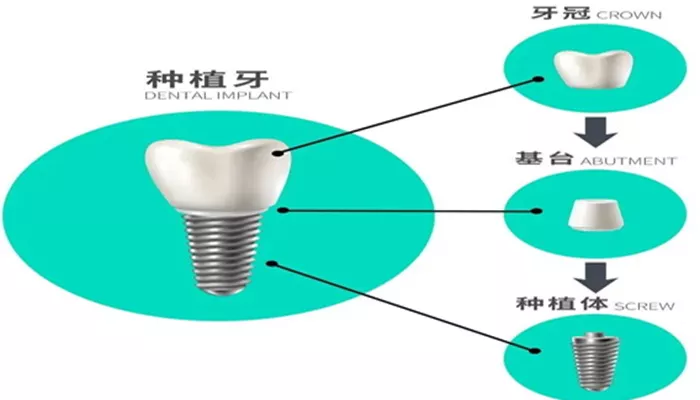Dental implant surgery is a common procedure that replaces missing teeth with artificial ones. While it is generally safe and effective, some patients may experience bleeding after the surgery. This article will discuss why bleeding can occur, how to manage it, and what steps you can take to promote healing after your dental implant procedure.
Understanding Dental Implant Surgery
What Is a Dental Implant?
A dental implant is a titanium post that is surgically placed into the jawbone. It serves as a replacement root for a missing tooth. Once the implant integrates with the bone, a crown is placed on top to complete the restoration.
Why Is Bleeding Common After Surgery?
Bleeding after dental implant surgery can occur for several reasons:
Surgical Trauma: The procedure involves cutting into the gums and drilling into the bone, which can damage blood vessels.
Blood Thinners: If you are taking anticoagulant medications, you may be at a higher risk for bleeding.
Infection: An infection can cause inflammation and bleeding in the surgical area.
Poor Healing: Factors such as smoking or not following post-operative care instructions can affect healing and increase bleeding.
Immediate Steps to Control Bleeding
If you notice bleeding after your dental implant surgery, follow these steps to manage it effectively.
1. Bite on a Gauze Pad
One of the first steps to control bleeding is to bite down on a sterile gauze pad.
How to Do It
Position the Gauze: Place a clean gauze pad directly over the surgical site.
Apply Pressure: Bite down firmly on the gauze for 30 to 60 minutes. This pressure helps to stop the bleeding by promoting clot formation.
Change as Needed: If the gauze becomes soaked, replace it with a new pad. Do not remove the gauze too soon, as this can disrupt the clotting process.
2. Stay Calm and Rest
Staying calm can help reduce blood pressure and minimize bleeding.
Tips for Resting
Sit or Lie Down: Find a comfortable position and avoid strenuous activities.
Avoid Talking: Try not to talk too much, as movement can disrupt the surgical site.
3. Use Ice Packs
Applying ice packs can help reduce swelling and control bleeding.
How to Use Ice Packs
Wrap Ice in a Cloth: Do not apply ice directly to the skin. Wrap ice in a cloth or use a cold pack.
Apply for 15-20 Minutes: Place the ice pack on the outside of your cheek near the surgical site for 15-20 minutes. Repeat as needed.
Additional Steps to Promote Healing
After controlling the bleeding, it is essential to follow additional steps to promote healing and prevent further bleeding.
1. Follow Post-Operative Instructions
Your dentist or oral surgeon will provide specific post-operative care instructions. Following these instructions is crucial for a smooth recovery.
Common Instructions
Avoid Strenuous Activities: Refrain from heavy lifting or vigorous exercise for at least 24-48 hours.
Do Not Rinse or Spit: Avoid rinsing your mouth or spitting for the first 24 hours to prevent dislodging the blood clot.
Limit Physical Activity: Take it easy for a few days to allow your body to heal.
2. Maintain Oral Hygiene
Good oral hygiene is essential for preventing infection and promoting healing.
Tips for Oral Hygiene
Brush Gently: You can brush your teeth, but avoid the surgical site for the first few days.
Use an Antimicrobial Mouthwash: Your dentist may recommend a gentle mouthwash to help keep the area clean.
Avoid Flossing Near the Implant: Do not floss around the implant site until your dentist advises you to do so.
3. Stay Hydrated and Eat Soft Foods
Proper nutrition and hydration are vital for recovery.
Recommendations for Diet
Drink Plenty of Water: Staying hydrated helps support healing.
Eat Soft Foods: Choose soft foods like yogurt, applesauce, and mashed potatoes to avoid irritating the surgical site.
4. Avoid Certain Activities
Certain activities can increase the risk of bleeding and should be avoided during recovery.
Activities to Avoid
Smoking: Smoking can impair healing and increase the risk of complications. If possible, refrain from smoking during your recovery.
Drinking Alcohol: Alcohol can interfere with healing and should be avoided for at least 48 hours after surgery.
Using Straws: Sucking through a straw can dislodge the blood clot and cause bleeding. Avoid using straws for at least a week.
When to Contact Your Dentist
While some bleeding is normal after dental implant surgery, you should contact your dentist if you experience any of the following:
1. Persistent Bleeding
If bleeding continues for more than 24 hours despite following the above steps, it may indicate a problem.
2. Excessive Swelling or Pain
Some swelling and discomfort are normal, but if you experience excessive swelling or severe pain, contact your dentist.
3. Signs of Infection
Watch for signs of infection, which may include:
Fever: A temperature above 100.4°F (38°C) can indicate an infection.
Pus or Discharge: Any yellow or green discharge from the surgical site should be reported.
Increased Redness: If the area around the implant becomes increasingly red or warm, contact your dentist.
Conclusion
Bleeding after dental implant surgery can be concerning, but it is often manageable with the right steps. By biting on a gauze pad, applying ice, and following post-operative care instructions, you can effectively control bleeding and promote healing. Good oral hygiene, a healthy diet, and avoiding harmful activities are crucial for a successful recovery.
If you experience persistent bleeding or any concerning symptoms, do not hesitate to contact your dentist. Early intervention can prevent complications and ensure a smooth healing process. Remember, dental implants are a long-term investment in your oral health, and taking care of them is essential for their success.
Related topics:

